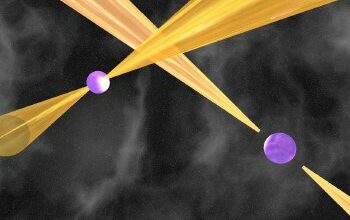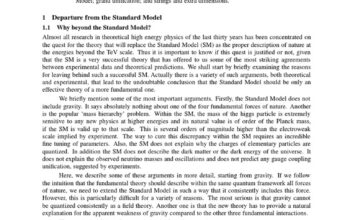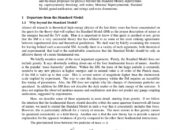The cosmos, an intricate tapestry of celestial bodies and forces, harbors enigmas that challenge our comprehension of the universe. Among these enigmatic phenomena is dark matter, an elusive substance that accounts for approximately 27% of the universe’s mass-energy content. This article embarks on an exploration of how dark matter influences galactic formation and structure, offering insights into its implications for our understanding of cosmic evolution.
Dark matter remains undetected through conventional means; it does not emit, absorb, or reflect electromagnetic radiation, making it invisible to telescopes. However, its existence is inferred through gravitational effects on visible matter. This section elucidates the observable effects of dark matter on galactic rotation curves and gravitational lensing, which include pivotal evidence supporting the dark matter hypothesis.
Observations of spiral galaxies reveal discrepancies between the predicted and actual rotation velocities of stars. According to Newtonian dynamics, the orbital speed of stars should decrease with distance from the galactic center, analogous to the behavior of planets in the Solar System. Yet, this is not the case. Instead, stars located at the periphery of galaxies exhibit high rotation speeds. Such anomalous behavior indicates the presence of mass that is not accounted for by visible matter—this is attributed to the gravitational influence of dark matter. The empirical work of Vera Rubin and others provided seminal contributions, solidifying the argument for dark matter’s existence. As stellar velocities provide critical data, they unveil the density profile of dark matter surrounding galaxies.
Gravitational lensing offers an additional observational pillar supporting the dark matter paradigm. When light from distant galaxies passes near massive objects like galaxy clusters, it is bent—a phenomenon described by Einstein’s theory of General Relativity. The degree of lensing can be utilized to infer the mass of the foreground object, including the elusive dark matter that constitutes much of the mass in these clusters. By mapping the distortions in the cosmic background and foreground images, astrophysicists can ascertain the presence and distribution of dark matter, reshaping our understanding of galactic environments.
The formation and evolution of galaxies are inextricably linked to the nature of dark matter. Early universe models suggest that dark matter played a crucial role in gravitational clustering following the inflationary epoch. As baryonic matter—comprising protons, neutrons, and electrons—cooled and condensed, it became gravitationally bound within the potential wells formed by dark matter. This phenomenon catalyzed the genesis of the first stars and galaxies, which subsequently grew through mergers and accretion within the cosmic web structure.
Moreover, the cosmological framework is heavily influenced by models that incorporate dark matter as an integral component. The Lambda Cold Dark Matter (ΛCDM) model, widely accepted amongst cosmologists, posits that cosmic expansion is driven by dark energy while dark matter provides the scaffolding for matter clumping. Within this framework, computer simulations illustrate the vast distribution of dark matter halos that structure galaxies and clusters, elucidating how these entities interact gravitationally. Such simulations assert that cold dark matter, with its relatively low velocities, coalesces into denser regions, leading to the formation of structures ranging from dwarf galaxies to massive galaxy clusters. The multifaceted interplay between dark matter and baryonic physics unveils challenges as simulating galaxy formation requires precision in the treatment of hydrodynamics and feedback processes.
Within this grand design, it is paramount to consider different galactic morphologies influenced by dark matter distribution. Galaxies can be categorized as spiral, elliptical, or irregular based on their shapes and stellar content. Each morphology is impacted by dark matter’s gravitational dynamics. Spiral galaxies, characterized by their flat rotation curves, exhibit significant dark matter envelopes, which stabilize their structures against gravitational collapse. In contrast, elliptical galaxies, generally devoid of gas and ongoing star formation, reveal a more spheroidal dark matter distribution, influencing their stellar kinetics and formation histories. Understanding these relationships contributes extensively to astrophysical models and the taxonomy of galactic classification.
Indeed, dark matter serves not only as a pillar for gravitational binding but also as a mediator of galaxy interactions. The gravitational influence of dark matter halos reshapes the trajectories of colliding galaxies. During such encounters, phenomena like tidal stripping occur, whereby stars and gas are drawn from their host galaxies into the dark matter halo or onto neighboring galaxies. Moreover, observations of galaxy clusters and their interactions furnish tantalizing insights into how dark matter mediates galactic collisions. These interactions are critical to deciphering the long-term evolution of galaxies within the cosmic tapestry.
Efforts to detect dark matter directly have yielded limited success; however, a plethora of experimental endeavors continue to press forward. Proposed candidates for dark matter, such as Weakly Interacting Massive Particles (WIMPs) and axions, are targets for both terrestrial and astroparticle physics experiments. These experiments strive to identify the nature of dark matter, paving the way for further inquiries into its role across cosmic epochs.
Ultimately, the study of dark matter transcends mere curiosity about its existence. It embodies the quest to grasp the fundamental architecture of the universe. By mapping the unseen, researchers unravel the enigmatic forces at play that shape galaxies, illuminating not only the cosmos’ structure but also its dynamically evolving narrative. As our comprehension deepens, we approach a profound realization: dark matter is not merely a component of the cosmos; it is a fundamental aspect of the universe’s grand design, intricately woven into the very fabric of reality itself.












